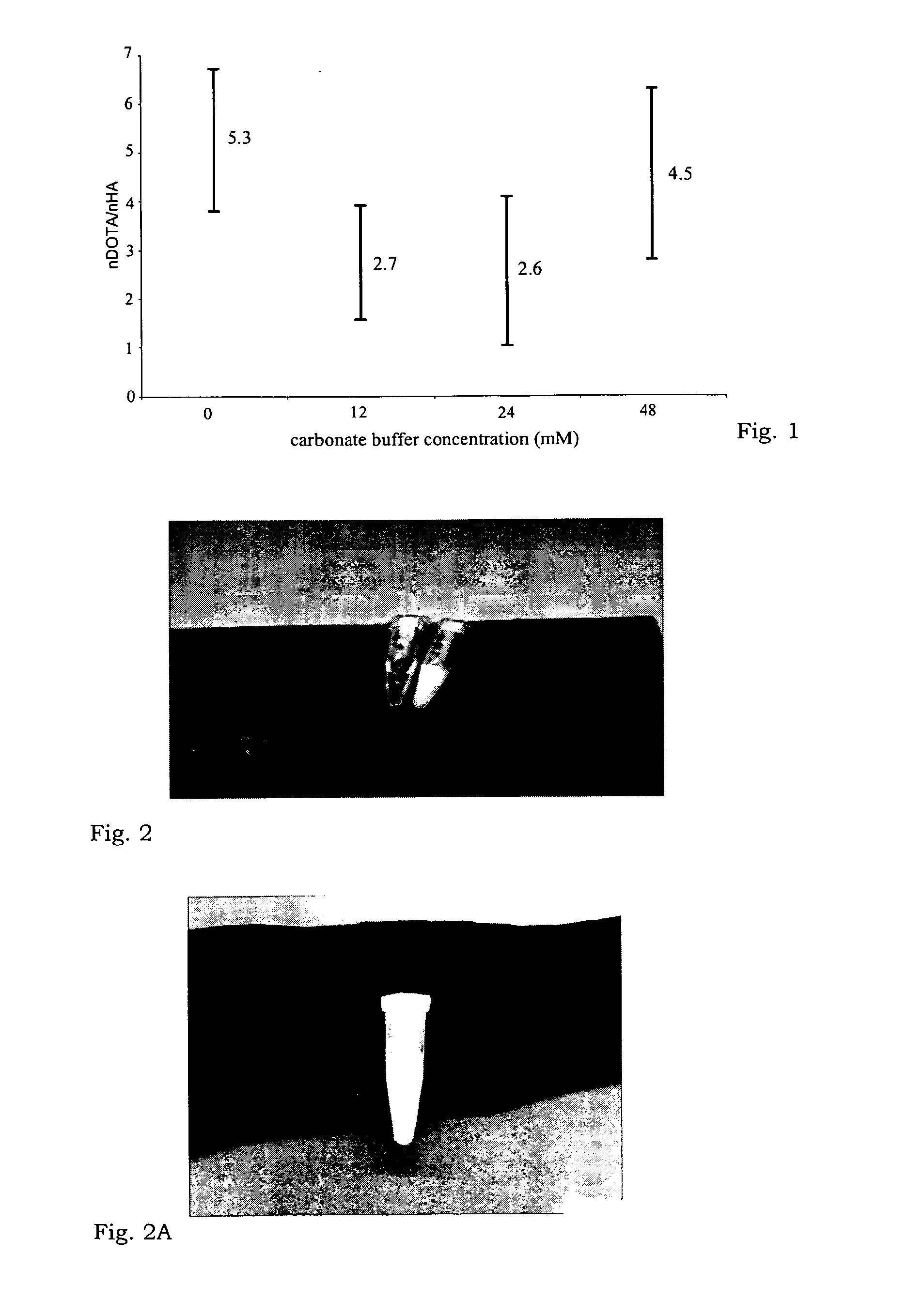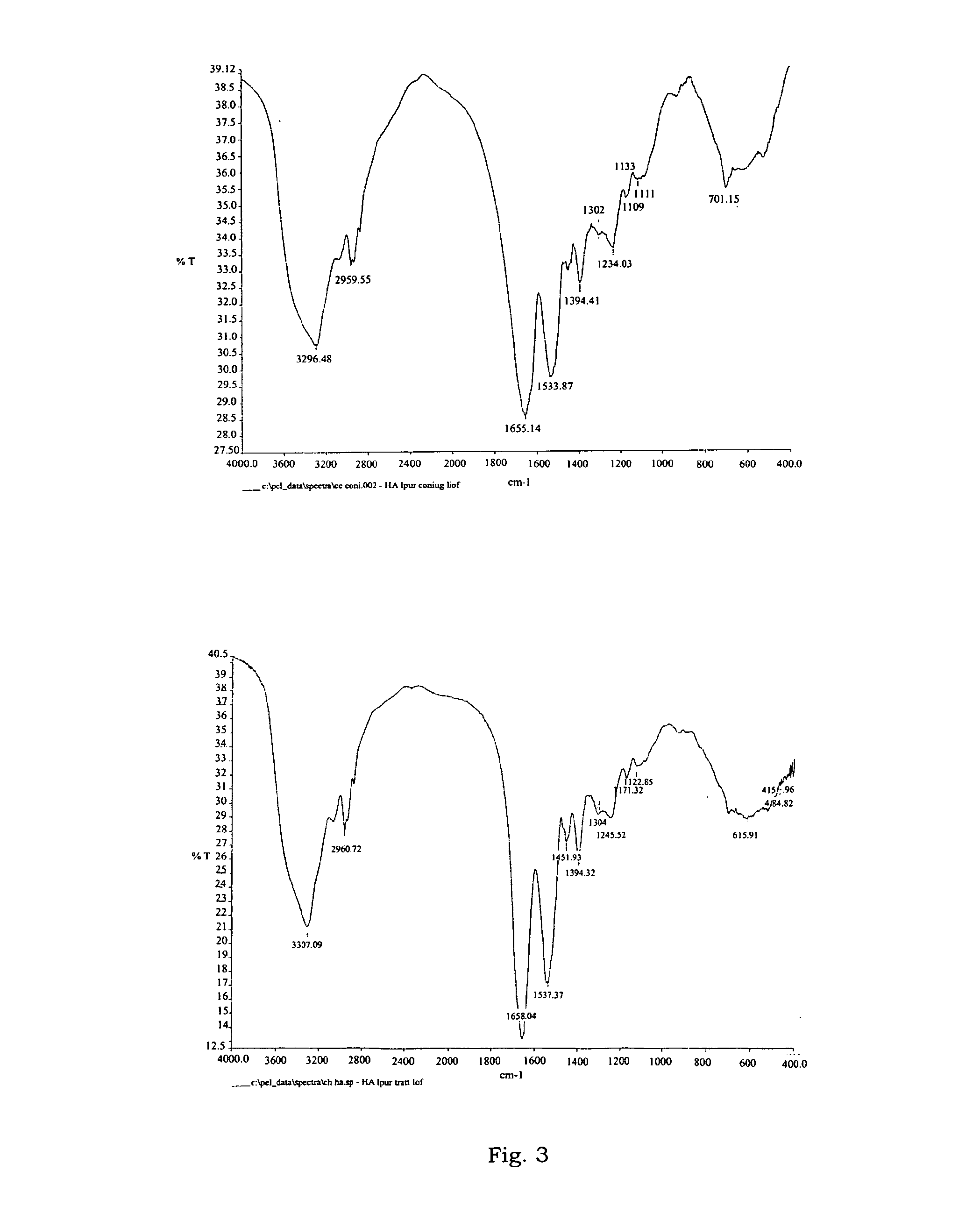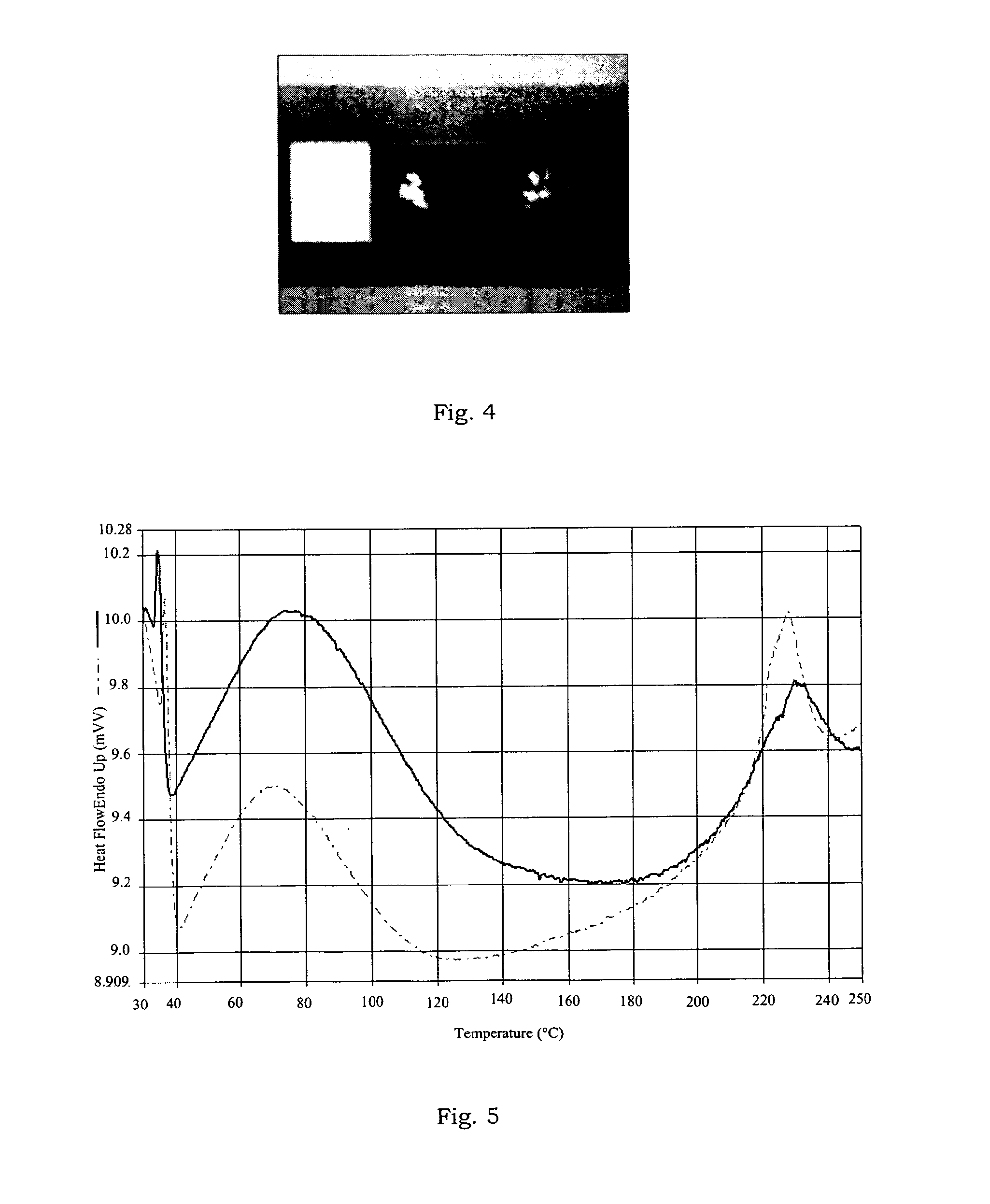Conjugate of human albumin and 2-(4-isothiocyanatobenzyl)-1,4,7,10-tetraazacyclododecane-1,4,7,10-tetraacetic acid useful for the localization of radionuclides for diagnostic and therapeutic purposes
- Summary
- Abstract
- Description
- Claims
- Application Information
AI Technical Summary
Benefits of technology
Problems solved by technology
Method used
Image
Examples
example 1
Spectrophotometric Determination of the Degree of Conjugation of p-SCN-Bn-DOTA with HA on Two HAC Samples (Batch 041010)
[0220]The procedure described in the previous section entitled “SPECTROPHOTOMETRIC DETERMINATION OF THE DEGREE OF CONJUGATION OF p-SCN-Bn-DOTA WITH HA” was carried out starting from a DOTA stock solution=0.0178 mg / ml
[0221]R2=0.9932 SYx=0.0175
TABLE 3Abs (Au)mmoles of DOTA1.690.0001.630.0351.530.0691.420.1041.300.1391.210.174
[0222]Based on the data reported in Table 3 the calibration curve of FIG. 8 was built.
[0223]By virtue of the obtained calibration curve the values of degree of conjugation (DS) reported in the following Table 4 were calculated for the two samples.
TABLE 4μmoles ofDS (nDOTA / nHA)Sam-HACAbsorbanceHACDOTA / mg(95% confidenceplebatch(Au)(mg)HACinterval)10410101.5821.020.04542.40-3.7220410101.5760.980.04932.66-4.02
example 2
[0224]The procedure described in the previous section entitled “ICP-AES DETERMINATION OF 175Lu COMPLEXED WITH HAC (HAC-175Lu)” carried out on two HAC-175Lu samples.
[0225]As explained in said section, first the calibration curve of FIG. 9 was built, with six aqueous solutions a increaing concentration, contaiining up to 3 μg / ml of standard 175Lu, based on the values reported in the following Table 5.
[0226]R2=0.9971 SYx=3776.93
TABLE 5μg / mlEmission at 261.542 nm02400.5261231538901.58276721077433175043
[0227]By virtue of the obtained calibration curve, the values of the amounts (nmoles / mg of HAC-Lu) of complexed 175Lu reported in the following Table 6 were calculated.
TABLE 6(nmolesEmissionLu / mg HAC-Lu)Sam-HAC(sample-HAC-Lu(95% confidencepleBatchHAC-Lumatrix)(mg)interval)10410100510101262031.1620.8-23.32041010051010118886122.8-25.5
example 3
[0228]The procedure described in the previous section entitled “RADIOCHEMICAL PURITY (RCP)” was carried out on a HAC sample (batch 110610) labelled with 111In.
[0229]Sample Y (Batch 110610): 16.7 mg / ml HAC in 1M sodium acetate pH 5.
[0230]Specific activity of HAC labelled with 111In: 1 mCi / mg.
[0231]Results described in FIG. 10 were obtained.
PUM
| Property | Measurement | Unit |
|---|---|---|
| Temperature | aaaaa | aaaaa |
| Temperature | aaaaa | aaaaa |
| Temperature | aaaaa | aaaaa |
Abstract
Description
Claims
Application Information
 Login to View More
Login to View More - R&D
- Intellectual Property
- Life Sciences
- Materials
- Tech Scout
- Unparalleled Data Quality
- Higher Quality Content
- 60% Fewer Hallucinations
Browse by: Latest US Patents, China's latest patents, Technical Efficacy Thesaurus, Application Domain, Technology Topic, Popular Technical Reports.
© 2025 PatSnap. All rights reserved.Legal|Privacy policy|Modern Slavery Act Transparency Statement|Sitemap|About US| Contact US: help@patsnap.com



